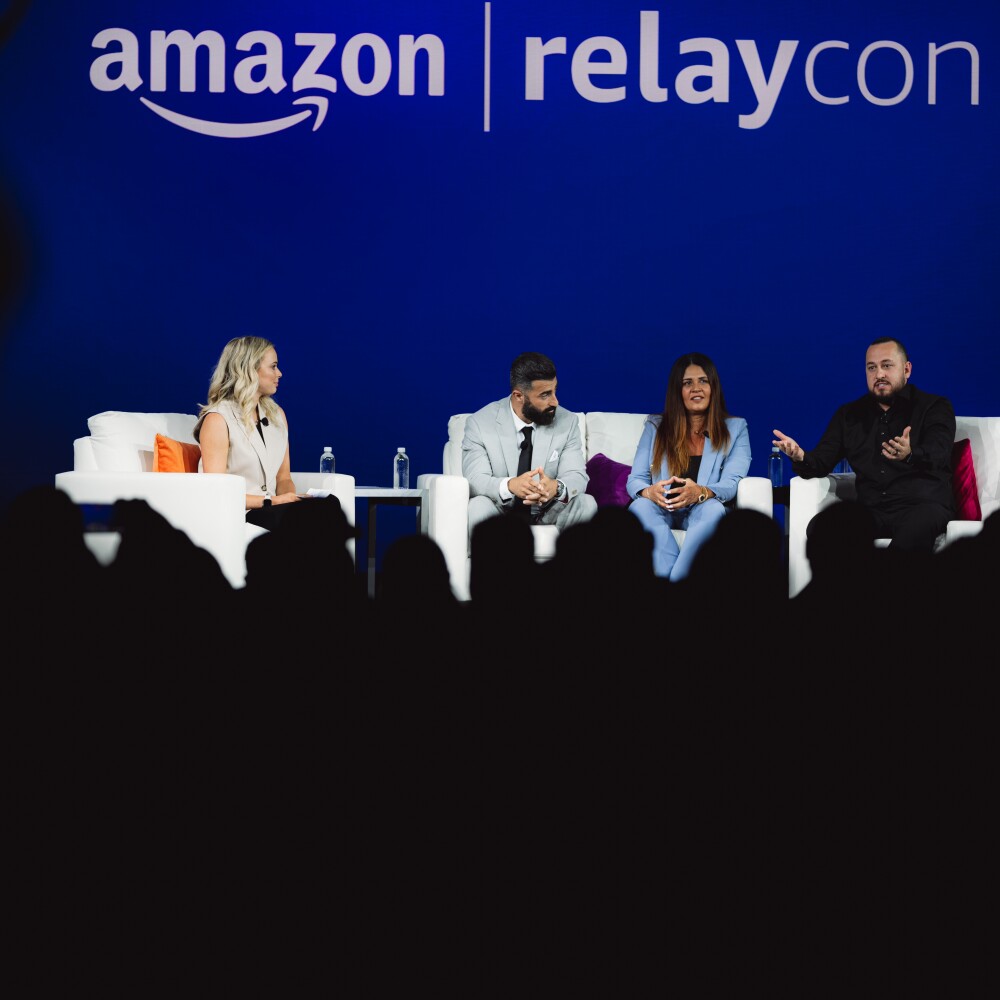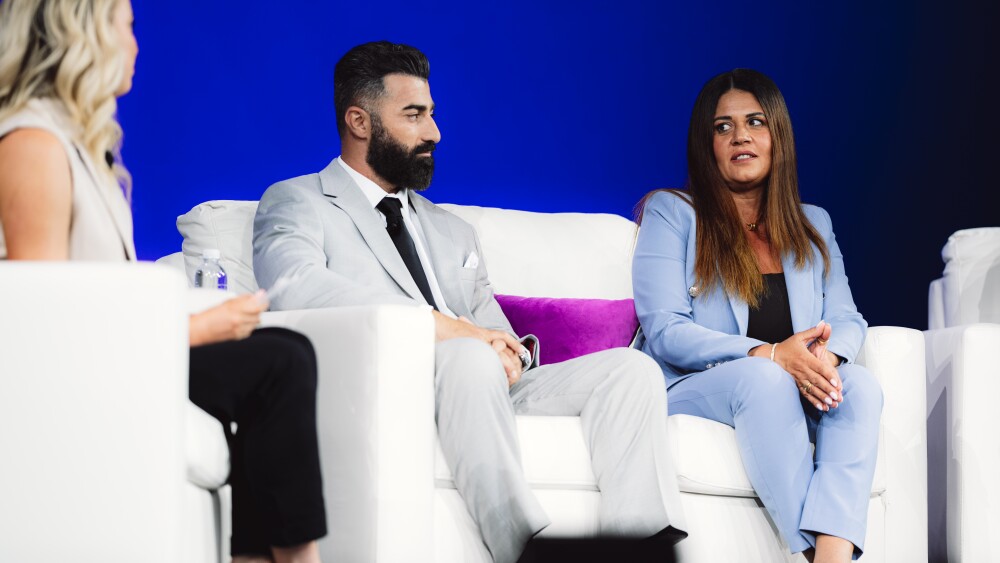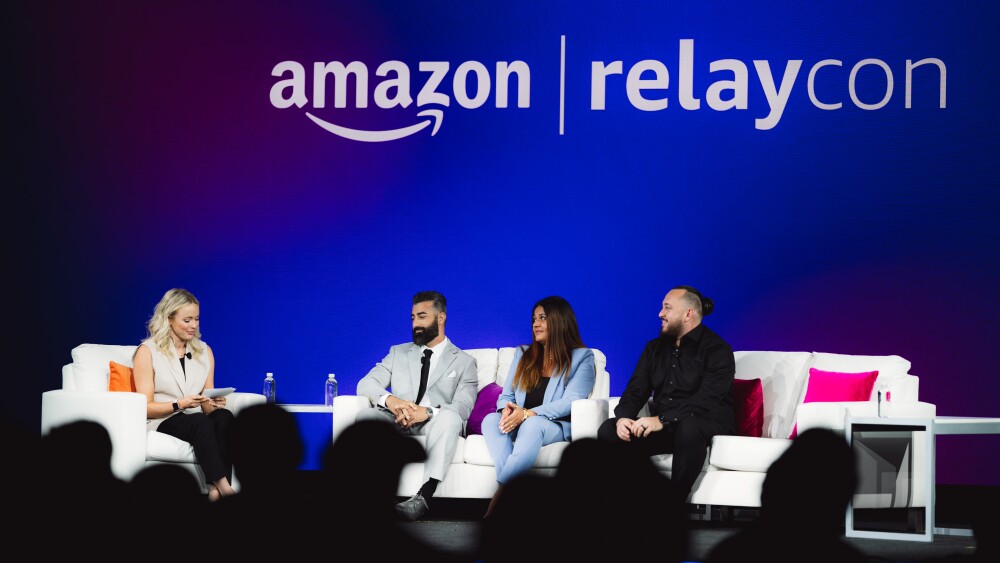This interview was conducted during RelayCon 2024. It has been edited and condensed for length.
Amazon Relay asked three of our carriers to share their experiences and best practices in the logistics industry. Here’s how they’re staying sharp and keeping business moving forward.
- Adis Danan, President, Joyride Logistics LLC
- Neli Nikolova, Operations Manager, IGEX Trans Co
- Bayar Palani, President, Advanced Trucking LLC
How have you leveraged technology to optimize your logistics processes?
Adis Danan: When ELDs became mandated, they came with telematics and TMS systems. We slowly implemented all of the technology we could, and now we have AI-powered cameras that tell us when we have hard breaks, accelerations, and rolling stops. It’s increased our efficiency about 30%. Every single thing that happens on the road is live, and we get notified by email and text message so our safety team can look at it right away. They call the driver, make sure it’s fine, and whatnot.
We also implemented a phone system that tracks every issue our drivers could have. Our dispatch, safety, and maintenance are 24/7, with a live person answering. It makes our drivers feel comfortable. They don’t have to go around and leave messages.
Amazon provides free ELD and AI dash cam devices to Relay carriers with an annual Motive contract.
What are some of the biggest challenges you’ve faced in operations?
Neli Niklova: Retaining drivers. You have to give them flexibility options, and communication is key.
Bayar Palani: I think connecting with your drivers is very important, whether on a personal level or letting the driver know that you’re available during an operation. It goes a long way. You can’t make the driver feel like a number. You have to build that relationship.
What are your top 3-5 strategies to improve efficiency & reliability?
Bayar Palani: I started out as a single owner-operator. The one thing I would recommend is get to know that truck. Don’t be afraid to get your hands dirty in the beginning. Training yourself to be mechanically inclined will take you a long way.
Up until my fifth or sixth truck, I was running most of the operation myself, and I realized I needed more help. So, I opened up an in-house repair and maintenance shop. I got a little lot alongside it to park my trucks. Right now, I have two full-time mechanics constantly working on my equipment to make sure they’re running safely on the road. That took a lot of weight off my shoulders.
Another thing I’d recommend for the smaller carriers starting out – don’t go out and buy a variety of truck brands. You should stick to one brand, one model for your fleet. Get yourself familiar with it, so if it ever breaks down, you have the knowledge to fix it because the problems will be very similar. Repair and maintenance is one of the biggest pain points in this industry.
Amazon offers exclusive rates and discounts for Relay carriers on rentals, maintenance, parts, and repairs.
What advice would you give to carriers looking to improve?
Adis Danan: Listen to your people. When I started hiring drivers and a back office, the more I listened to them, the better I was doing. It wasn’t about me. It was our whole team making sure we make the right decisions.
Pivoting and innovating is the main thing, even if you’re a one-truck operation. You need software for invoicing, you need telematics. The more you do at the beginning, the less you have to do when you get bigger.
“Make sure that you get into telematics. It helps with safety and saves a lot of money on insurance.”
How do retain, attract, & upskill talent in the logistics industry?
Neli Niklova: We started with the drivers. When you bring your people up, they bring you up. And once they feel comfortable, they’re going to stay with you. So, give your drivers a lot of options and safety training.
Adis Danan: It’s very important to have consistency as a business. We all get drivers from the same pool, so it’s your approach that counts. If you have to retrain a driver every single month, you’re not going to succeed. When he comes in, he needs to listen to you. Everybody can drive, but you need to make sure that they drive how your business tells them to – safely, using all the technology that you have.
We implemented a driver retention program. Everything the driver does, it follows him – the safety operations, maintenance, payroll, timely bill of ladings. Once we put all that together, we give him a score. If he’s the lead driver, he’s incentivized. He gets the best truck, the best equipment, the best route. The other drivers see that and want to be the lead driver.
What innovative approaches can reduce cost & environmental impact?
Bayar Palani: I came across information about how efficient it would be to reduce the speed limits on your vehicles. What I noticed over time was fuel efficiency, less wear-and-tear on the equipment and tires, and it definitely mitigates accidents and potential for collision. It’s a safety thing overall, but also cost-effective.
Adis Danan: When we have hoses or electric cables or tires break down on the road, we incentivize our drivers to bring those parts back to find smart ways to reuse them. Don’t throw them on the side of the road.
What are the biggest trends shaping logistics? How are you preparing?
Adis Danan: AI technology. Trucking is a generational business, so a lot of trucking companies are used to how they’ve been working since the 90s. But we already have AI in our telematics and cameras to tell us if we’re too close to the vehicle in front of us, etc. I think the second thing is going to be – I’ll say it – autonomous vehicles. That’s the way that it’s probably going to go. We have self-driving cars, we’re probably going to have self-driving trucks.
“We want to make trucking cool. We’ve got to attract the new generation of drivers and adjust.”
How have you reduced lead times to your on-time delivery rates?
Bayar Palani: Communication between the drivers and my dispatch team. I hired on a full-time, 24/7, 365-days-a-year dispatch team. I don’t get calls anymore at the three in the morning, which allows me to focus on other parts of the operation. My dispatchers are constantly in communication with my drivers. If you’ve got a driver that isn’t willing to communicate and gets offended easily, I say get rid of him because that’s going to hinder your operations.
Neli Niklova: Use the technology that’s available to you. If you can track your drivers 24/7, do it. Know how late they’re going to be, see what their speed limit is. Safety is number one. Everything else in the business – three trucks, five trucks – will come.
Want to be a future Relay carrier?
We’re constantly listening to our carriers to develop new and improved experiences that support their success and the trucking industry as a whole. Start your Relay application on desktop or our app on iOS or Android. But first, check out Relay’s carrier requirements to make sure hauling for Amazon is the right fit for your business.
Disclaimer: Amazon does not tender loads through any third-party load boards. Any Amazon loads posted on third-party load boards will only be tendered directly to approved and onboarded carriers via the Relay web portal or Relay mobile app. If you are interested in hauling loads for Amazon, sign up and book directly on relay.amazon.com. For more about our efforts against fraud and cargo theft, see our trustworthy transportation page.










